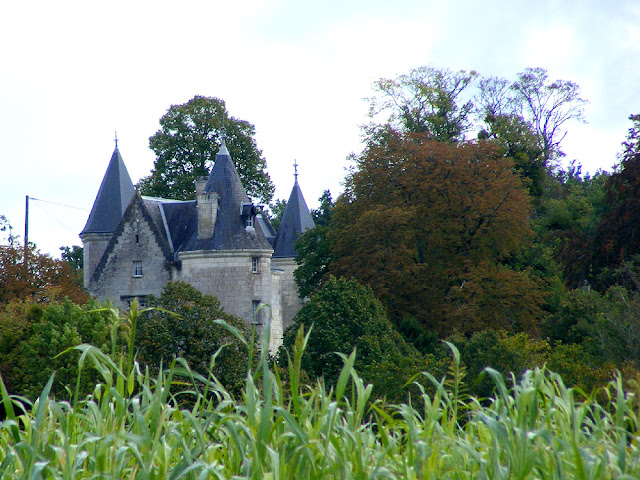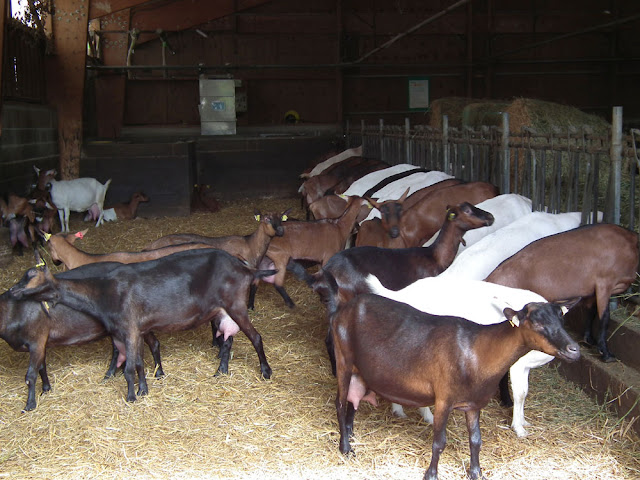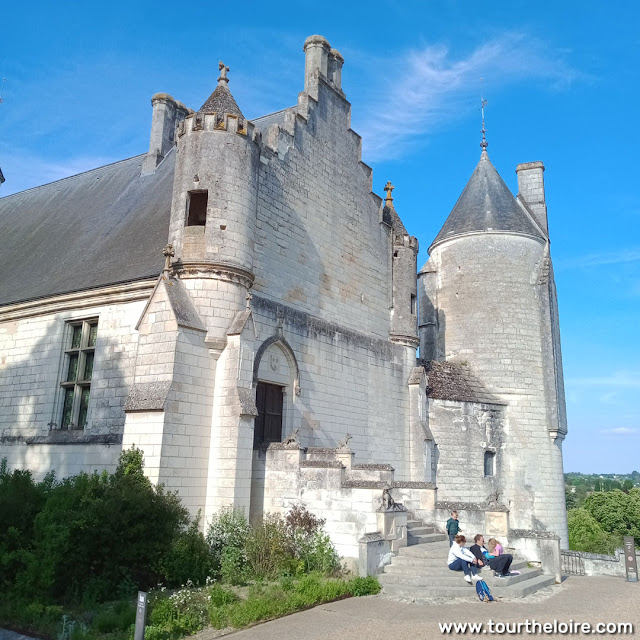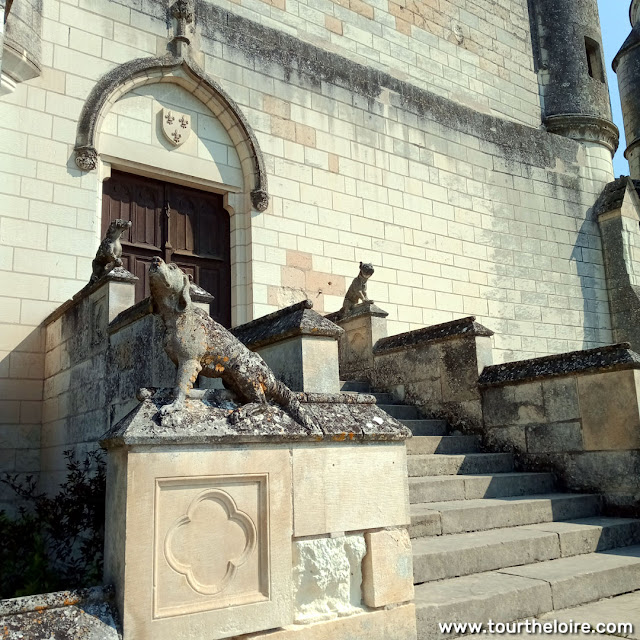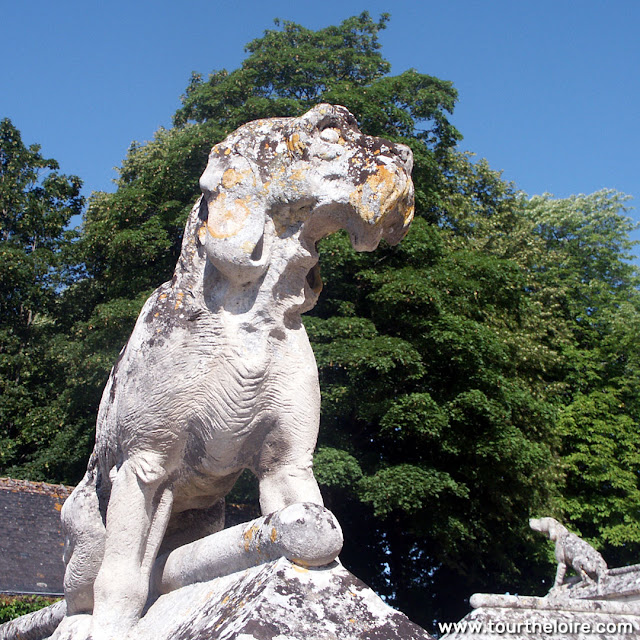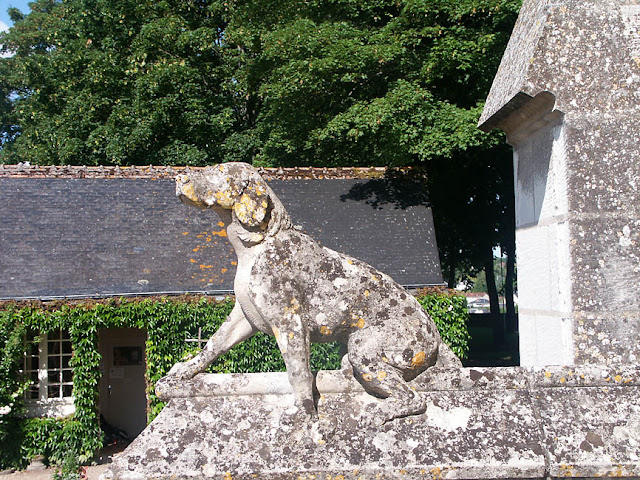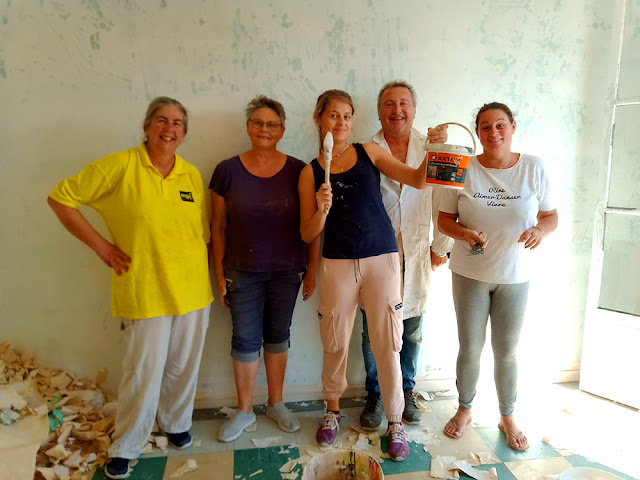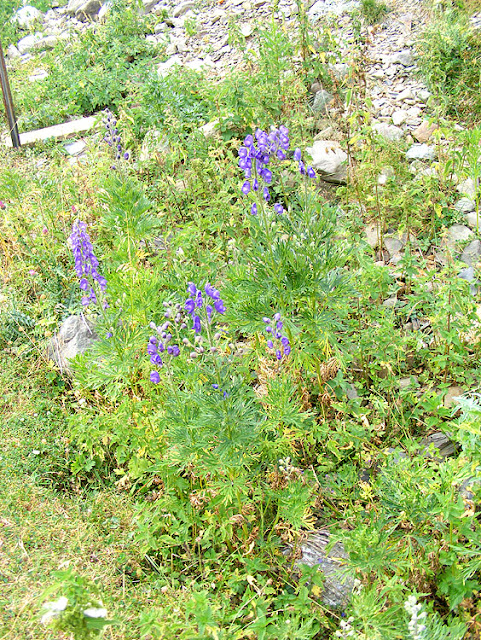On the side of the town hall in Ecueillé is a memorial plaque for those villagers who were killed in World War II. It depicts a woman described as holding a 'palm' leaf (I suspect it is an olive branch). It is dedicated to a specific date, 25 August 1944. It lists 23 army officers, civilians, men and women, who all died in August 1944, between 10 August and 30 August, at Ecueillé, Heugnes and Chateauroux. Two of them were honoured with military awards.
Alexandre Hall was born in Pau and was an officer in the 8th Cuiraissiers, a tank regiment. He was twenty years old when he was killed.
Georges Pierre was born in Ablon-sur-Seine and was a Resistance fighter in the FFI group Maquis Carol. He was 19 years old when he was killed. He is believed to be one of the many young men who joined the Resistance and went into hiding rather that submit to the German conscription of forced labour.
Joseph Renahy was born in Vesoul (Haute-Saone) and joined the ORA, the original Resistance set up in 1943 when the Germans invaded the 'free zone'. Later the ORA operated in conjunction with the FFI and he was a member of the Brigade Charles Martel, under Colonel Chomel. He was mortally wounded at Ecueillé during a skirmish with the retreating Germans and died later in hospital in Chateauroux. He was 21 years old.
Michel de Villemarest was a Resistance fighter who died in Chateauroux. Nothing else is known about him, but the date and place of his death suggests his story is similar to Joseph Renahy's.
Albert Laurent was an officer in the FFI, in the Maquis de l'Indre. He was born in Cherbourg and was killed when the tank he was in was incinerated by an anti-tank mortar at Heugnes. He was 23 years old and was awarded the Croix de Guerre.
Leopold Linares was an officer in a Supply Division. He came from Paunat in the Dordogne, was married and 39 years old. He was killed alongside Albert Laurent when their tank caught fire and was awarded a posthumous Légion d'Honneur.
Onésime Adam was a local man, born at Déols, and the driver of the tank that was set on fire. He was 34 years old, and technically a civilian at the time.
Paul Baron was an FFI Resistance fighter with the Maquis de l'Indre, and one of the five victims of the attack on the tank at Heugnes. He was born in Marseille and was 20 years old.
Charles Fernandez was a civilian, and there is no further information about him.
René (or Roland) Lamipault was a civilian working for the Supply Division. He was one of the victims of the skirmish at Heugnes and was 42 years old, married with two children.
Bernard Salmont was an FFI Resistance fighter who died of his wounds in the cottage hospital at Ecueillé. He was born in Paris and 20 years old, studying to be a doctor and had been educated in London.
Maurice Gauvin was from Ecueillé and a member of the FFI Maquis Carol. He was caught by the enemy returning home and executed by shooting.
Pierre Jollet was a civilian but there is no detail of how he was killed except that it was as a result of the War.
Likewise Roland Jollet, Léopold Niquet, Robert Reuillon, Pierre Rozienko, Mme Aubé-Fournier, Mme Jollet-Lanchais, Mme Jollet-Reimbert, Mme Morin-Foulon, Jeanne Niquet and Marcel Montel.
The story of the Battle of Ecueillé is told on the county fire service website [link] which I have translated below.
Far from the major centers and communication routes, Ecueillé had not suffered particularly during the painful years of the German occupation. Only the removal of 59 prisoners to foreign parts plunged many families into bitterness for four years.
The proximity of the German camp de la Pyramide had also forced, by prefectural decree, some of the locals to experience the occupation up close and personal.
It was a little later, during the period of July-August 1944, in the fight for the liberation of France, that the region of Ecueillé was to experience some atrocious hours.
On July 29, two Wehrmacht soldiers who had been peacefully eating lunch were attacked, wounded and taken prisoner by a maquis (Resistance) group that was not from the area.
The day of August 10 and the following day were full of heightened and mixed emotions for the population. While the roads were criss-crossed by German convoys heading north, spreading terror and death in the villages and countryside, the groups of French Forces in the Interior were fulfilling their mission: to delay the enemy, inflict losses and disrupt them.
On Friday 25 August 1944 well-equipped French troops made a dramatic entry into Ecueillé. They consisted of the 1st Cavalry Squadron that had joined the Resistance as an entire unit from August 8th. Their strength of 250 men, well trained and keen, could be considered as a shock element. Alas, the day was to end tragically with a terrible battle that brought death, fire and ruin to this small town, which had been spared by the War until then.
Around 10:00 pm a German convoy returned to the area. The French opened fire on the convoy which, as was seen after the fight, included :
1 light armoured car
6 trucks with cannon trailers
6 x 88 mm anti-tank guns.
Their guns went into action and fired in retaliation on the houses around the square, breaking through the facades and blowing up the houses. The battle was terrible and intense during the first two hours.
The firemen, helped by the men of the squadron, got the municipal fire pump up and running in difficult conditions. It was highly dangerous, with bullets and shells whistling past on both sides. The shrapnel prevented anyone from approaching and intervention against the fires was difficult. Reinforcements were requested.
Around 3:00 am, the firemen of Levroux and Buzançais arrived and attacked the fire with those of Ecueillé as well as ambulances to take care of the injured. A dozen houses, among which the town hall, were on fire. Fifty metres from the fighting, the firemen and the Red Cross transported the dead and wounded.
The ambulances from Châteauroux, which arrived around 6:00 am, made a first trip with the most seriously wounded on stretchers.
In total, a hundred firemen assisted by the men of the squadron would participate in the rescue and fire extinguishing operations.
In the morning, the last German survivors (about 40) were taken by the French troops.
The enemy had lost: 17 dead, 19 missing in the burned houses, 40 prisoners.
On the French side, the losses were as follows: 7 civilians killed, 4 civilians wounded, 4 soldiers killed.
Eleven houses were totally destroyed, including the town hall, and about twenty buildings were seriously damaged.
Earlier on the same day, General de Gaulle delivered his famous speech in Paris " Paris broken, Paris outraged, but Paris liberated... ".
August 26, 1944 Triumphal descent of General de Gaulle, from the Place de l'Étoile to Notre-Dame de Paris.


